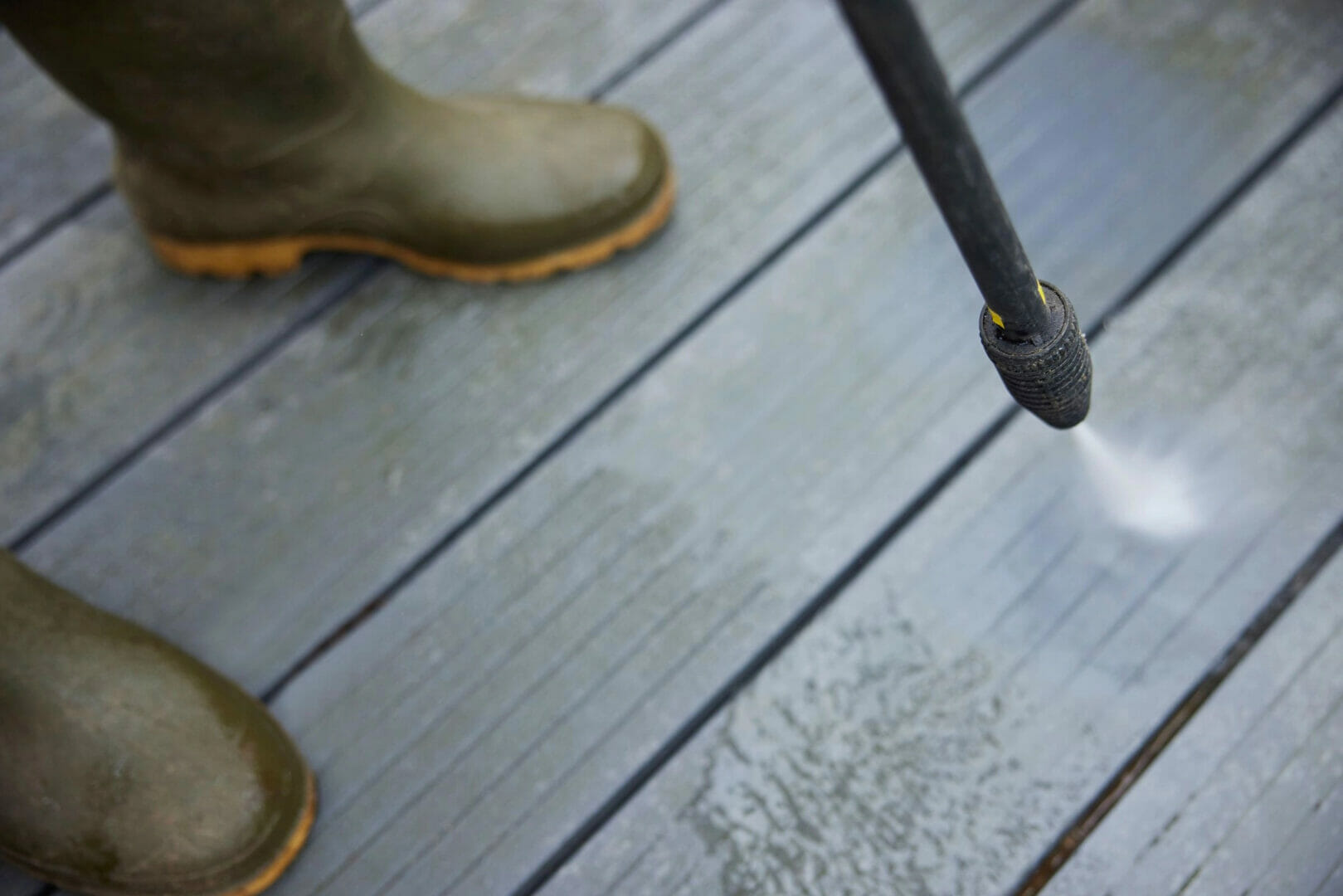
Wondering how to remove green mold from a wood deck? If your deck is turning green, this is why it’s happening and how to remove it.
Removing green mold and mildew from a wood deck is a job every deck owner faces every now and then. Leave it and it won’t just make your backyard look unkempt and uninviting, green decking can also become slippery, hazardous and can even damage the deck’s structure.
It is common for decks to develop green algae and mildew as moisture becomes comes trapped in the wood, so cleaning a deck yearly is a must. However, you may find that while it’s worse in winter, it’s also a problem in shady spots on the deck through summer, too. So, if you are planning on building a deck, or are about to stain a deck, you will need to know what to look out for and how to remove green mold from a wood deck.
How to remove green mold from a wood deck
To remove green mold from your deck ideas, you will need to give your deck a regular brush with a stiff broom. Using a pressure washer on your deck at least once a year is an extremely effective way of banishing any build-up of dirt and algae, too, as well as giving your deck a fresh look by bringing the wood back to its original color.
If you do use a pressure washer to remove green mold or mildew from a wood deck, bear in mind that timber is made of fibers which can open up if exposed to too much pressure, which can cause the deck to become vulnerable to rot, so make sure to keep the washer’s head at least six inches away from the deck boards, and ensure the pressure washer is on a wide spread setting.
Chris Moorhouse, Category Director for Timber with Wickes suggests investing in a wood cleaner, which remove algae and stains with a biodegradable mixture without damaging the deck with other, harsher products. Wood cleaner can be easily brushed into your deck and washed off with water and a stiff brush, keeping your deck clean of algae. This is a good, if slightly more labor-intensive, alternative to using a power washer and needs only to be reapplied every few months.
A further step you can take to avoid the green algae building up on decking is to replace old boards with anti-slip decking, which is less prone to algae buildup.
‘Traditional timber and composite decking boards become dangerously slippery when wet or icy and as the result of the build-up of algae and leaves. If you choose anti-slip decking, this will be much less of an issue,’ suggest the professionals at Gripsure.
Why is my deck turning green?
The experts at Gripsure explain that ‘timber is an attractive substrate for algae to quickly take hold – the timber surface retains moisture and therefore they can remain damp long after the rain has gone,’ meaning it can easily form mildew, mould and algae. When this process is repeated every season without interval cleaning measures to prevent algae from forming, your deck may be at risk of turning green and developing a slimy film.
What happens if deck algae builds up?
The algae on your deck’s surface, if neglected, can cause the wood to splinter and will inevitably damage the deck’s structure, which will be an expensive repair job.
To prevent and reverse the damaging effects of green decking we suggest using preservatives and staining.
Chris Moorhouse, Category Director for Timber at Wickes recommends using a layer of wood reviver to restore your decking. ‘All cut ends, drill holes and notches in pressure-treated softwood timber need to be treated with an end-grain preservative,’ he says.
Gripsure experts advise that this will protect the timber against fungal attacks. ‘Both softwoods and hardwoods can be oiled to prevent the timber from weathering. This will also prevent the timber from natural weathering to a silvery grey’
‘Oils and stains are a great way to bring life back to older timber, improve the longevity and performance of your decking, and to make next year’s clean down that bit easier.’
How do you get rid of green on decking?
The experts at Deck supermarket recommend using a mixture of one cup of white distilled vinegar and a gallon of lukewarm water to treat the early stages of green mold from a wood deck.
White distilled vinegar is a natural cleaner and much like other deck products it adds a layer of protection to fending off the onset of algae. After power washing your deck, leave the mixture to soak on your deck for five minutes. Rinse the solution thoroughly and wipe with a microfiber cloth. When this process is completed we suggest using deck stain to ensure your deck is further protected.
Can you paint over algae on decking?
You can paint over algae but you will get a very poor finish and will only cover the green deck look momentarily. The algae will continue to grow, so still needs to be removed.
